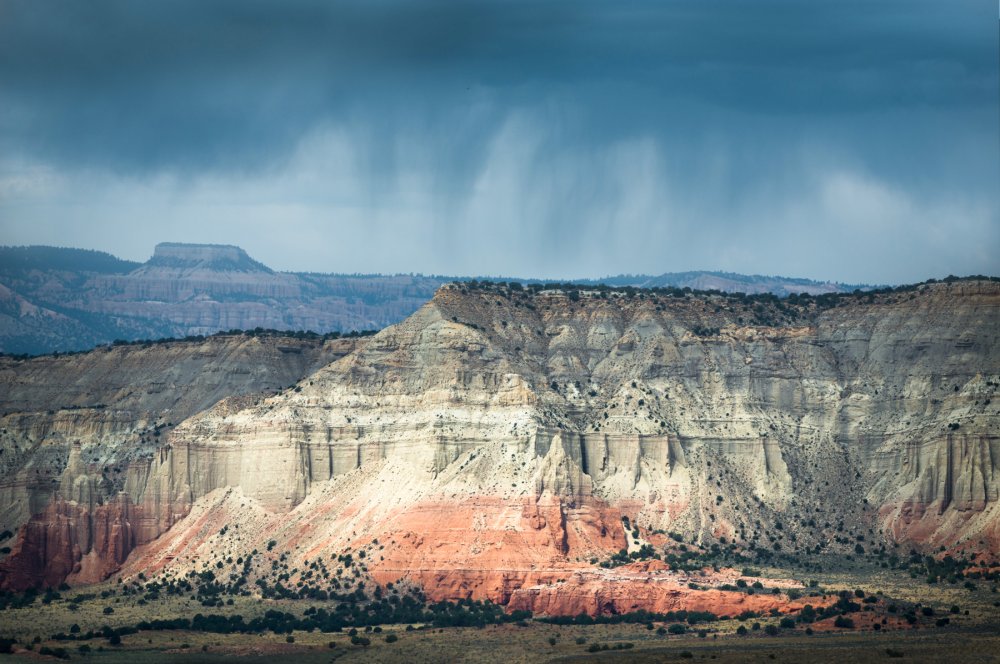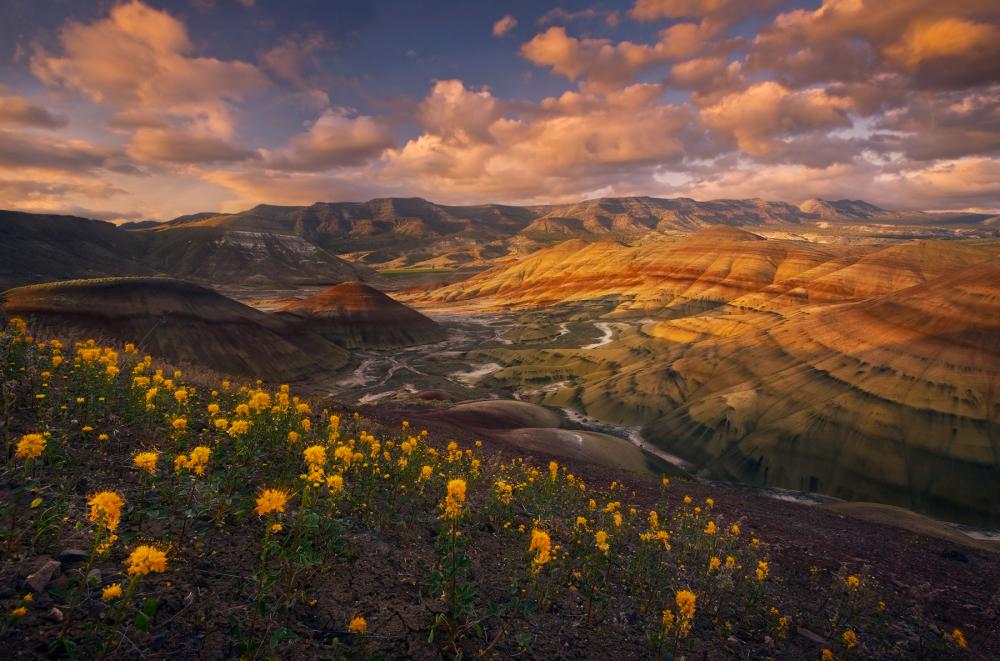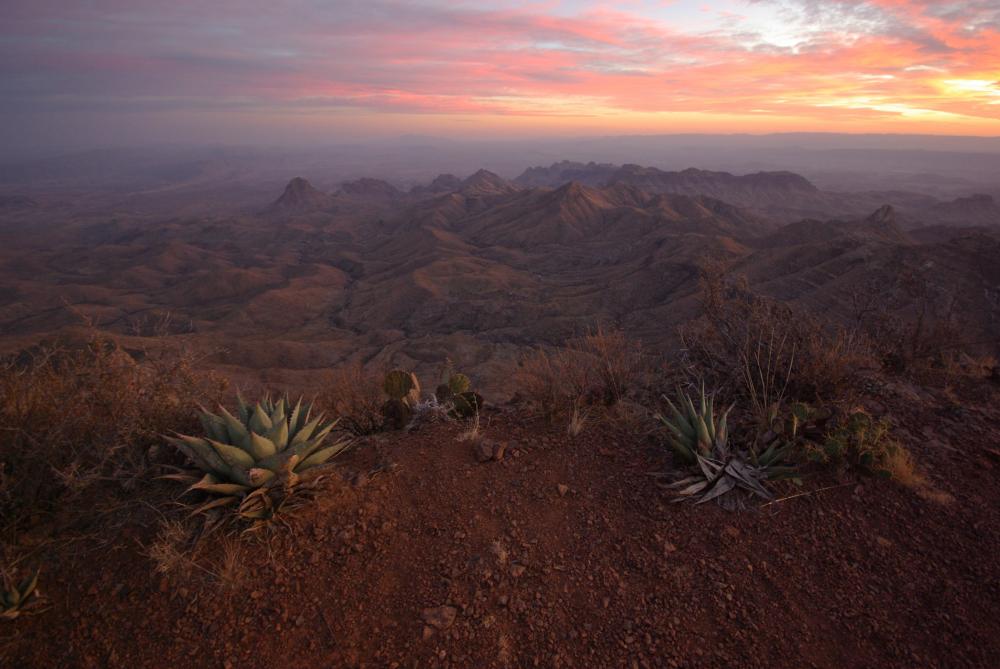12 parks and monuments filled with dinosaurs
National parks, monuments and other public lands have yielded some of the most significant fossil finds in American history. Here are a few of the top spots for dinosaurs and other ancient life.
The benefits of wilderness and other public lands for modern-day flora and fauna are well-known, but conservation of wild places helps preserve traces of bygone life too, making it easier for paleontologists to study dinosaurs, mammoths, ancient sea creatures and the evolutionary forces that shaped them.
The National Park Service alone presides over more than 200 sites with “documented paleontological resources,” including many spots with museum exhibits or fossils still waiting to be unearthed. Many of those units were originally protected under the Antiquities Act, a law that authorizes presidents to protect exceptional historical or natural landmarks when Congress can’t or won’t. Without such efforts, these invaluable scientific resources may have been lost forever. This is just one more reason why The Wilderness Society advocates for protecting more of America’s wildlands.
Here are just a few of the protected wildlands that have yielded traces of ancient life, shedding light on the history of our planet.
Dinosaur National Monument (Colorado, Utah)
Fossil hunters have been unearthing the bygone beasts in this monument for over 100 years, and the list of species it has yielded includes icons like Allosaurus, Apatosaurus, Diplodocus and Stegosaurus. First protected under the Antiquities Act by President Woodrow Wilson and later expanded by President Franklin D. Roosevelt, Dinosaur National Monument is aptly-named. Situated between Utah and Colorado, this stretch of mountains, canyons and desert comprises a major chunk of the Morrison formation, an expansive sedimentary rock unit that is considered the most productive source of near-complete dinosaur skeletons in North America. Among highlights is the Quarry Exhibit Hall, which allows visitors to view an enclosed quarry-face “wall” of about 1,500 dinosaur bones. The Carnegie Dinosaur Quarry, situated below that exhibit, was an especially bountiful fossil site.
Grand Staircase-Escalante National Monument (Utah)

Grand Staircase-Escalante National Monument, UT.
Mason Cummings, TWS
In addition to being widely recognized as one of the most beautiful spots in the U.S., Grand Staircase Escalante National Monument, part of the expansive Colorado Plateau, is the site of the Kaiparowits Formation, a sedimentary rock array that is somewhere between 72 and 83 million years old. By some accounts, it could contain "the best and most continuous record of Late Cretaceous terrestrial life in the world” (part of the reason President Bill Clinton protected it under the Antiquities Act). Indeed, though only a tiny fraction of the area has been excavated by paleontologists, it has already proven unusually fruitful, yielding the only known specimen of a new Triceratops ancestor in 1998 among other fossils. Experts think there are many more bones waiting to be unearthed in the once-swampy region, as attested by the 2013 discovery of a brand new species closely related to Tyrannosaurus Rex.
Badlands National Park (South Dakota)
In 1846, Dr. Hiram Prout described the ancient remains of a titanothere--one of a group of bulky, extinct mammals with huge, horned skulls--in an area of southwestern South Dakota known for its dramatic, almost otherworldly landscape. Thus began the illustrious fossil-hunting legacy of what would later become a national monument, and eventually Badlands National Park. Many other prehistoric mammals have since been unearthed within the park’s Chadron and Brule sedimentary rock formations, in addition to older fossils such as Cretaceous-era sea creatures.
One of the more noteworthy recent finds came in 2010, when a seven-year-old girl discovered an unusually well-preserved saber-tooth cat tooth and turned it in to park rangers. Unfortunately, not everyone is so mindful of scientific posterity; fossil poaching is a persistent problem within the park.
John Day Fossil Beds National Monument (Oregon)

John Day Fossil Beds, OR
Marc Adamus
Over tens of millions of years, the shifting volcanic landscape of the John Day River basin has collected an impressive catalog of ancient life. Because of this, the three units of the monument established in the area--Clarno, Sheep Rock and Painted Hills--are immensely valuable, among the few places on earth where scientists can study the progression of evolution over a period of time. Among the most important paleontological finds in the John Day Fossil Beds National Monument are many Cenozoic-era mammals, including rhinoceros, horse and beaver precursors, and proto-saber-tooth cats now known as “John Day tigers.” Though the monument is justifiably famous, it draws comparatively few visitors--and those who do come are thoroughly rewarded for their time.
Prehistoric Trackways National Monument (New Mexico)
Between 250 and 300 million years ago, the Permian period saw the rise of the reptiles (and, later on, strange proto-mammal creatures known as therapsids or synapsids). Prehistoric Trackways National Monument has preserved a snapshot of this era of evolutionary upheaval in red mudstones, most notably in the form of fossilized footprints (there are more than 150 fossil sites in and around the monument). Among species immortalized in the desert stretch of the Robledo Mountains is Dimetrodon, the sail-backed carnivore that is likely the most famous pre-dinosaur reptile. Park rangers offer guided tours of the area.
Florissant Fossil Beds National Monument (Colorado)
Florissant Fossil Beds National Monument is one of only nine National Park Service lands set aside expressly for the protection of fossils. Centered around the site of an ancient lake,, the monument captures the ecosystem of central Colorado circa 34 million years ago and is considered one of the best and most diverse paleontological resources on earth. Petrified redwood tree stumps, other plants, fish and mollusks have been preserved here from a time when this was a temperate- to-subtropical environment. In addition, as many as 1,500 different kinds of fossil insects and spiders have been unearthed in the monument’s fossil beds.
Big Bend National Park (Texas)

Big Bend National Park, Texas
Adam Baker, flickr
Situated along the border with Mexico, nearly 80-year-old Big Bend National Park is a beautiful, 800,000-acre stretch of Chihuahuan Desert, the largest desert in North America. This area sustains a surprisingly diverse array of plants and animals, but there is a lot going on beneath the surface, too; the park contains a bounty of fossilized life from around the late Cretaceous (encompassing the last days of the dinosaurs) and early Tertiary. More than 90 dinosaur species have been unearthed in the park, including the uniquely Texas-named Alamosaurus--a 50-ton sauropod that was probably the largest dinosaur ever to live in North America. Other major finds include Deinosuchus, the famous 30-to-40-foot ‘terror crocodile,’ and the massive, leathery-winged Quetzalcoatlus.
Denali National Park & Preserve (Alaska)
Denali National Park & Preserve was not known for its dinosaurs until 2005, when a college student found a fossilized footprint not far from a park road. Since then, hundreds of tracks left behind by dinosaurs, pterosaurs (flying reptiles including the iconic pteranodon) and prehistoric birds have been pointed out by visitors and staff alike. The 2007 discovery of footprints belonging to young hadrosaurs prompted an expert to joke that “Denali has been a family destination for generations.” The diversity of finds in the park has made Denali one of the best places to study the Cretaceous period--as was amply demonstrated by the 2012 identification of a track belonging to a Therizinosaur, which boasted three-foot-long claws on either front foot and was only recently catalogued by experts.
Fossil Butte National Monument (Wyoming)
Wyoming’s Fossil Butte National Monument doesn’t contain any dinosaurs--the lake bed on which it centers is “only” about 50 million years old--but its limestone-embedded assortment of ancient fish, reptiles, birds, mammals and plants is hard to beat. The monument was established over 40 years ago, protecting the largest deposit of freshwater fish fossils in the world, but major fossil discoveries were documented as early as the 1860’s, when Union Pacific railroad workers uncovered delicate fish skeletons. Modern-day fauna include golden eagles, pronghorn antelope, mule deer, elk and short-horned lizards.
Agate Fossil Beds National Monument (Nebraska)
Congress established the Agate Fossil Beds National Monument in western Nebraska in 1965 with a focus on the area’s great paleontological resources, which had then been known for decades. The grassy, wind-swept expanse is now largely cleared of fossils, but it once contained many fine Miocene mammal specimens first “discovered” sometime around the turn of the 20th century (though in reality Native American tribes had been aware of the bones far earlier). Among the most unusual finds in the Agate Fossil Beds are two sites containing “devil’s corkscrews”--twisting fossilized burrows once made by ancient beaver ancestors. Two of these strange pieces have been preserved as part of an exhibit on-site. In addition to prehistoric animals, the area contains many Oglalla Lakota (Sioux) artifacts, now displayed in a museum nearby.
Glen Canyon National Recreation Area (Arizona, Utah)
Like Grand Staircase-Escalante National Monument, Glen Canyon National Recreation Area protects a piece of the expansive Colorado Plateau between Arizona and Utah. Also like that monument, Glen Canyon serves as a geological moment-in-time from the age of dinosaurs--the Mesozoic era--and beyond. The rock layers of this beautiful haven of canyons and mesas around Lake Powell go back hundreds of millions of years, and have produced fossilized remains of large Triassic amphibians, conifer trees, termite nests, dinosaur tracks, plesiosaurs (dolphin-like seagoing reptiles), mammoths and more. Watch a video about fossils at Glen Canyon.
Channel Islands National Park (California)
The five small chunks of land that make up the modern Channel Islands National Park, off the coast of southern California, were once part of a single large island, during the Ice Age (or Pleistocene). During that period, pygmy mammoths, one-ton herbivores endemic to the area, roamed the land, standing about half the height and one-tenth the weight of their full-sized cousins. Scientists think that a population of ordinary mammoths swam to the island in search of food tens of thousands of years ago, and subsequent changes to the environment itself gradually favored smaller individuals, leading eventually to the evolution of the smaller species. The remains of these creatures were excavated for the first time in 1873, and have since proven an invaluable resource for the study of evolution and prehistoric life.
